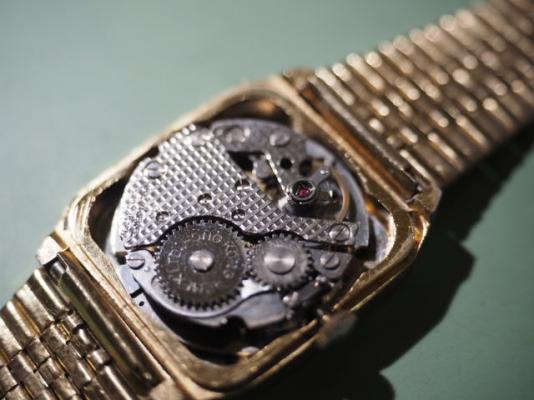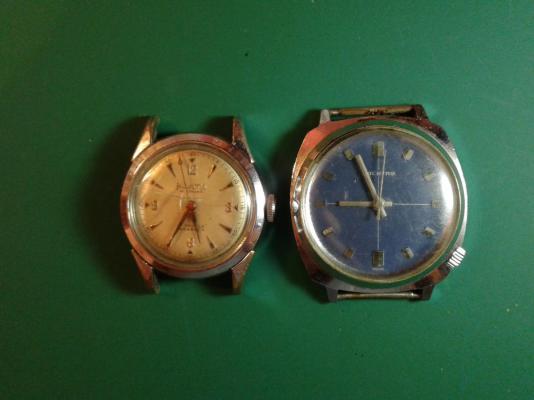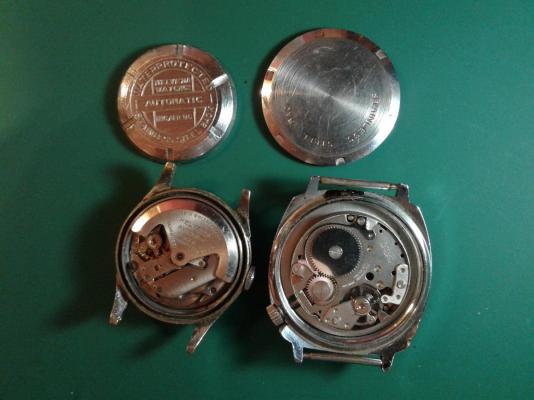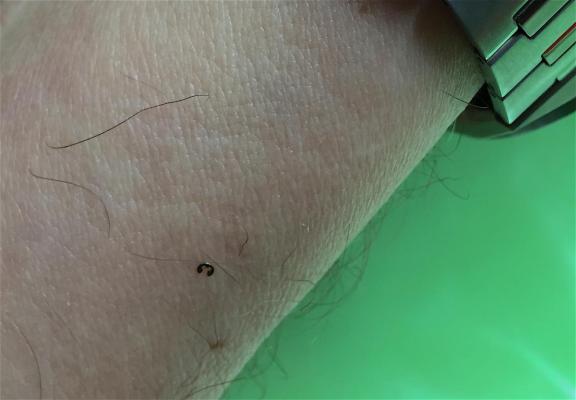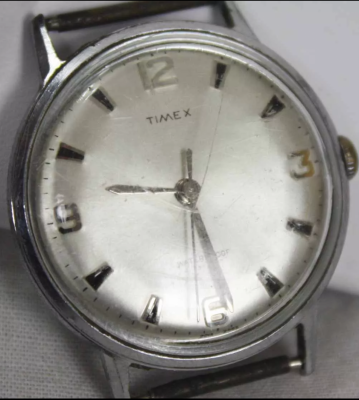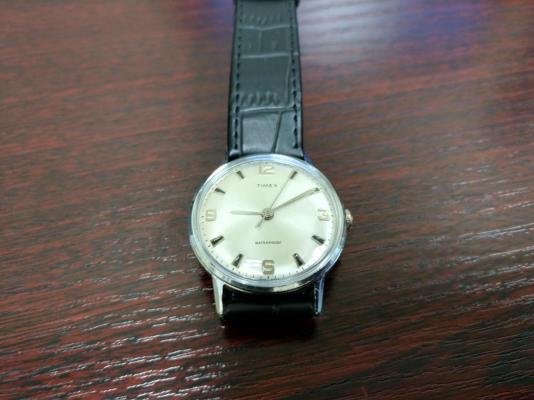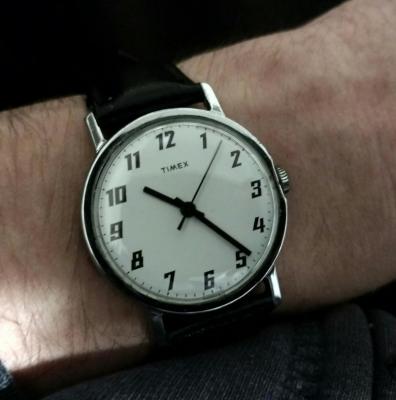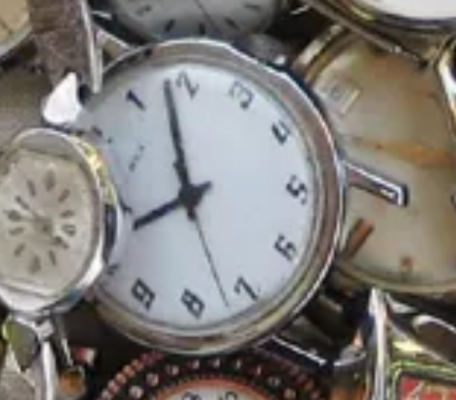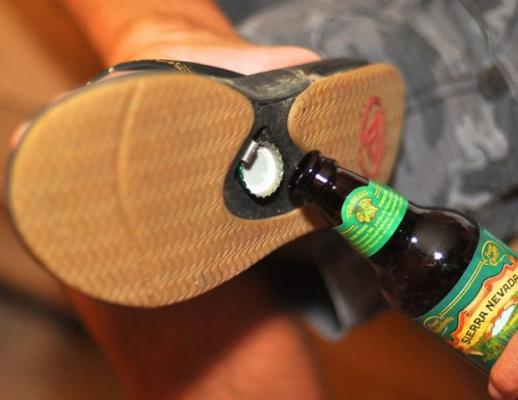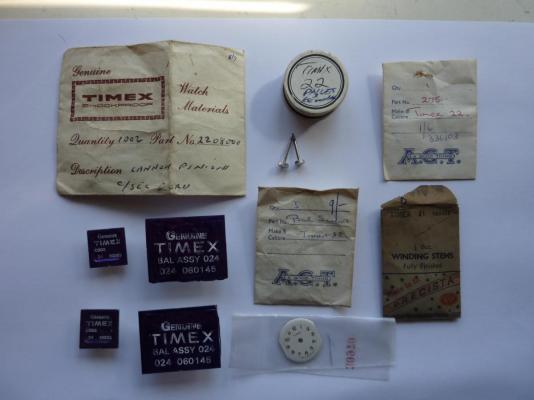Leaderboard
Popular Content
Showing content with the highest reputation on 03/09/16 in all areas
-
Personally I think smart watches are dumb...well, they aren't watches and they aren't computers so...maybe they are retarded electronics compensating to "look" smart!? :startle:4 points
-
Hey, they are really crappy mini-computers that do practically nothing;) Love your response Bob!2 points
-
Looks like the video won't load so a few pics of the movement in action . Sent from my SM-G900F using Tapatalk2 points
-
Lol. Just like vapoorize. Where does it go?? http://youtu.be/cpads8s5mik Sent from my iPhone using Tapatalk2 points
-
I have a story to tell, it's about a man which left this world some years ago, and his many watches. I've chosen this forum because of its rich human empathy and absence of classist attitude. It will take some more time for me to tell it completely, as it's made of memories that aren't mine in first place, yet must be told with respect and consideration, as they relate to someone that hasn't been lucky at all in his life - Uncle Mario, an avid collector of watches of no value whatsoever, as he couldn't afford anything better. To him, what is junk was a valuable technical and fashion item, and consistently he would get bored of each pretty quickly - does that remind someone that we know? Below one of the highlights. One jewel unadjusted, but as soon you shake it, it ticks happily just like the first day his owner had it. To be continued.1 point
-
So while doing my usual nightly bay rounds looking for the odd bargain. I found these two unloved by someone but not by me. The Lucerne I just liked the look of and being one jewel and still ticks for a second or two just needs a good service and new strap and will live again. The Helvetica cal 836 is a different matter the watch does run if a little pressure is applied to the barrel but the rotor is loose and if it needs a new one is going to be a swine to find I'm sure. I can't find much information on the movement so any info you have would be appreciated it also needs a new glass and a nice strap if i can get it running again. It was listed as being a men's watch but the size looks more like a boys or women's but doesn't have the look of a women's watch if there is such a thing. I plan to do a photo breakdown of this movement so check back for any problems I encounter. Mick1 point
-
Don't you hate it when you know you're removing a springy thing from a watch, but you don't want to bag it (too much trouble) so you just go ahead and push it off the pusher. "PING"......and the circlip smaller than a pin head just vanishes. You freeze like a rabbit in the headlights hoping to see or hear the landing but no luck. A scour of the bench top reveals nothing so you resign yourself to the loss, get a ziplock bag and remove the last three clips which although they spring like fleas on steroids, are captured inside the baggy. But imagine the relief as you go to scratch an itch on your left temple and notice a blemish on your underarm, not a blemish in fact, but the missing circlip. "YaFKNhoo" is a mild expression used by many watch tinkerers on finding that part no longer destined for the never never. I can't recommend too highly the use of the clear plastic sandwich bag when attempting to remove those high powered little parts that just want freedom and obscurity (usually in the carpet).1 point
-
1 point
-
No dissing at all. If you look at the Timex service manuals, that is the recommended method of cleaning a movement. The do say to take out the balance, which means un-pinning the hairspring (what fun!) but don't recommend separating the plates. Cheers!1 point
-
Yep...that works for phones that have been in the pocket during a downpour but not for ones that have fallen into the dunny...etc (don't laugh...it happens more often than you think). :D1 point
-
The serial number database is only a rough estimate, sometimes it can be a year or two out. Also, fairly common for some movements to be shipped out at a later date from when they were made.1 point
-
1 point
-
Now thats what I call a useful tool, be great on Holidays as well. Cheers, Vic1 point
-
1 point
-
1 point
-
1 point
-
Hats off! I wouldn't even be able to trace the number one without screwing it up. Very much impressed!1 point
-
1 point
-
You have my permission !!! Don't forget to make a video of this, some people would pay to see that !!!! :)1 point
-
Never mind, after some thought, here is a revised idea: Gl = Glace (on Longines's website, that's how they refer to the glass) plate = flat (there would be a dot after it if it were an abbreviation for plated, and the word "Glace" is feminine, so the adjective needs the "e" at the end) Concave (can't be the crown, it would be convex, not concave...) in summary : Gl plate concave Concave glass, with a flat top ? (concave on the inside, flat on the outside)1 point
-
Hey thanks. The video I did is what I was looking for all along. I have a ton on YouTube music and some magic videos but now am adding Watch Repair instruction where I can and only if it works. Mark is the man when it comes to the watch repair game. I am one step below amateur. You can find me on Facebook as well under JDWatchboy. I put up the site to track progress on some watches I am fixing for friends and for part costs only. Just enjoying the hobby, but who knows?Sent from my iPhone using Tapatalk1 point
-
Here is the video I put on YouTube with the technique. https://www.youtube.com/watch?v=2tQ4LHi0r1g Sent from my iPhone using Tapatalk1 point
-
I used rodico and the double sided hand tool and had a hell of a time with the minute hand. It was an art to level it off. If I had a hand press, I most likely would modify some of my watches.this is the beast that needed the hands put back after a repair and cleaning. Sent from my iPhone using Tapatalk1 point
-
The point is that it is not true to say that Timex watches "were never made to be serviced". They were, and Timex published information on precisely how they were made to be serviced, and supplied service parts for that purpose. That is not to say that the Timex service procedures were the only ones that could be applied, and I'll wager that many watchmakers felt, as you do, that the Timex method was in some way inadequate, and therefor a poor substitute for "proper" methods. This would almost certainly lead to a belief that they were not really meant to be serviced at all. However, the "proper" way to service a watch is also the expensive way to service a watch, and that is precisely what Timex was not about. They developed calibres, and processes for servicing those calibres, that were, in their view (as the manufacturer) adequate, and that would keep the cost of servicing down. You can't even argue that Timex were trying to increase the failure rate of their movements and so drum up more sales as people replaced watches that had failed due to inadequate servicing, as cheaper servicing would mean that people would be more inclined to get it done, and faults detected and corrected before they became failures. Also, increased failure in a brand, even when the the manufacturers service procedures had been rigidly adhered to, would lead to poor brand reputation and a reduction in sales. No, the processes recommended by Timex for their calibres were (and still are) adequate for the way that those movements were designed. This is kind of what I was getting at when I referred to watchmakers being reluctant to adopt different processes. The full strip down, clean, inspect, and lubricate service is the only appropriate approach for movements designed with that kind of attention and budget, which covers the vast majority of mechanical watches, and in those instances I wouldn't advocate anything less. However, it's horses for courses, and Timex movements were designed differently with different requirements. Perhaps an analogy would help illustrate here. After just about every race, practice session, set up session, qualifying session, etc, a F1 car engine and transmission is stripped, cleaned inspected, and then put back together again with fresh oil (Swiss approach). My Ford Mondeo gets its oil and filters changed every 10k miles (Timex method). I would be mad to adopt F1 procedures for my Mondi, and an F1 team would last less than 5 seconds if they left the same oil in for 10k miles. Don't get me wrong here, I don't champion Timex watches because they are the best that you can get. But I do think that they do what they were designed to do (cheap time keeping that was also cheap to maintain) extra-ordinarily well. Each to their own though :thumbsu:1 point
-
"If you sent a Timex watch back to them they would replace the movement or replace the whole watch." This is quite a common practise within a lot of manufacturing industries. If an item is returned to the factory it is often replaced as a unit because the cost of stripping down, diagnosing, repairing, and then reassembling far out weighs the cost of lifting a complete new unit off the assembly line or out of stock, plus the time period that the customer is without the item is significantly reduced. Generally speaking the failed item that has been replaced then goes into the company's QC department for the failure to be investigated and any lessons regarding design or manufacturing processes learned. As such the failed item has a value to the manufacturer. And this is not just limited to cheap products, I believe the manufacturers recommendations regarding the servicing of the Dubois-Depraz chrono modules found in many high end chronographs is to return to base for a swap. "Even the buttons never screwed onto the stem they were just pushed on." It's true that for some Timex calibres the stems were made and supplied with the crown permanently fitted. Although this meant that generic replacement crowns couldn't be used, it did mean that if a watchmaker ordered the correct Timex replacement, there was no fettling or fitting required to get it all to fit and function correctly, entirely in accordance with Timex's philosophy of making life easier for the watchmaker. "You couldn't get parts for Timex watches" I wonder what these were for then. I got them in a job lot from the disposal of an old watchmakers estate. He worked out of Aldeburgh in Suffolk in the 60's and 70's and only gave up on watch repair in the 80's when the quartz revolution seemed to reduce the work to battery changes and strap adjustments. Incidentally, the Timex 21 stems are, as the packet says, fully finished, complete with a thread all the way to the end, ready for a screw on crown. "I'd like to know how would you take apart a cheap movement with no screws but with rivets that are closed over by machine and aren't intended to be opened. not only open it repair it and put it back together. I'll tell you, you couldn't." Have a look here; http://timex.digidep.net/manuals/ Service manuals and bulletins for over 40 different Timex calibres.1 point
-
With all due respect CB I think you have missed the point. If Timex never intended their watches to be serviced then why did they publish service manuals and bulletins, and market service parts kits for most of their calibres? This was the point I was trying to make about servicing in the "Swiss tradition". Timex adopted a different approach not just to construction but also to maintenance. They recognised that nobody was going to spend 10x the purchase price of a new watch on a service so they came up with a simpler and quicker solution. That doesn't mean that they can't or were not intended to be serviced, simply that a different methodology needs to be employed. Like I said, the fact that so many beaten and abused (because they were so cheap) examples can be revived with just a half hour service is testimony to the design philosophy. I believe that the problem with Timex mechanicals lay not with the watches, but with watchmakers refusal to adopt different procedures which they considered to be inferior, regardless of how appropriate the new techniques were for the particular watch.1 point
-
I make no secret of my admiration for Timex mechanicals, not because of their Rolls Royce build quality, nor their "no expense spared" choice of materials, but because of their design. That's right, their remarkably successful design. No, they're not easy to service in the "Swiss tradition", but if they are serviced the way that they were designed to be serviced then they are a cinch. What's more, because they were so cheap in the first place, and because watchmakers, who insisted on trying to fully strip the movement to service it and therefore needed to charge twice the price of a new watch to do so, nobody bothered, and yet they still turn up at car boot sales, 50+ years old and beaten up, and still run (just about), and run properly after a half hours service (the way Timex intended). They were never intended to perform to COSC chronometer levels of accuracy, they were designed as a cheap utilitarian time keeper for the "every day man on the street", requiring the minimum of maintenance to keep going. And they do. The "V-conic" balance staff had no shock protection and yet I've never come across a Timex with a broken balance staff, despite some of them looking like they'd been through a cement mixer. Timex even strapped one of their watches to the prop on an outboard motor and ran it under water for one of their ads with no apparent ill effect. A lot of people deride Timex watches and yet they sold in their millions, and as for achieving their design objectives, they out did many other brands costing 10x as much. As for the Cotes Du Rhône, I have to be careful not to focus the mind too sharply on a school night but may well give it a go at the weekend.1 point
-
I know Timex pretty much symbolises the lower end of the market and the mechanicals don't lend themselves to servicing but when all's said and done many more people will have owned and enjoyed a Timex than will have owned a high end watch. I came to this forum as a complete novice and I remain a complete novice, as I've never serviced a watch in my life. Having said that, I'm a helluva lot more capable of servicing a watch now than I was before I joined simply because of the enthusiasm of all the members on here and their help and encouragement. A group of complete strangers who have become familiar, and even friends, simply by exchanging info and support for the shared passion that is watch collecting and repair. A watch is a watch is a watch! Rolex, Timex, Artex, Lurex! When a mechanism is ailing, my instinct is to try and fix it. The Bergeon Basher should be an absolute last resort, otherwise what are we? (I highly recommend the cheap Cotes Du Rhone from Carrefour - it focuses the mind wonderfully!) 'Night all!1 point
-
Are you sure you're on the right forum Old Hippy? Some of us might take offence at the suggestion that our watches are not only not worth the effort but are just so much junk!1 point






